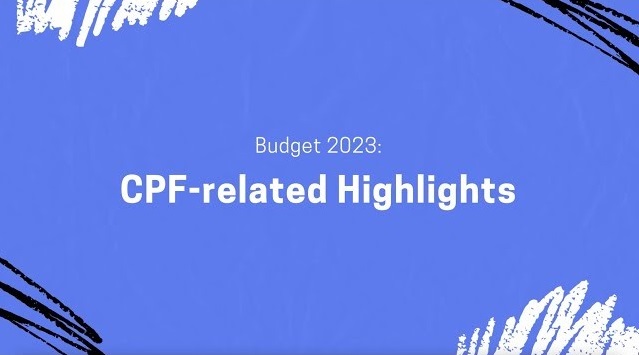23 June 2023
SOURCE: DollarsAndSense
Over the past year, rising inflation has been a worrying concern for many. As the general level of prices for goods and services increases, it erodes the purchasing power of consumers. Higher inflation can have adverse effects on individuals, particularly those with fixed incomes, as they might struggle to maintain their standard of living.
One group that may be more affected by inflation than others would be retirees. Unlike working adults, who can seek to earn higher wages, retirees may not have the avenue and ability to cover the shortfall as easily.
With high homeownership rate in Singapore, many retirees have their own place. This eliminates concerns about covering housing expenses in their retirement years. With MediShield Life, concerns over healthcare costs are also reduced, as retirees are assured that large medical bills will be covered. Additionally, MediSave can also be used to pay for MediShield Life premiums or other eligible expenses.
With both housing and healthcare being less of a concern, the main expenses for retirees would be in managing their day-to-day. This can typically be broken down into two areas. Essential spending and discretionary spending.
Essential spending refers to living expenses needed for daily life, such as food, groceries, transport, utilities and telecommunication needs. Discretionary spending is the additional expenses to maintain the type of lifestyle that one desires. This could include overseas travel, hobbies or on preferences regarding dining out at hawkers or more fancy and expensive restaurants. When inflation occurs, both essential and discretionary spending increase.
So how do retirees in Singapore maintain their lifestyle amid inflation? Do they need to make changes to their lifestyles after retiring? To better understand this topic, we spoke to them to find out how they are coping.
Jenny (not her real name) (age 71) was a school counsellor who stopped working full-time last year at the age of 70. Today, she works part-time holding a similar role in the school.
Due to her work arrangement, Jenny only chose to commence her CPF Lifelong Income For the Elderly (CPF LIFE) payout at 70 with the Escalating Plan. For Jenny, retirement is not daunting for her as she is assured that she can rely on her CPF LIFE Escalating Plan – a longevity insurance annuity scheme. This plan not only provides her with lifelong monthly payouts, but also gives her an 2% increment in her monthly payouts each year, which helps her cope with inflation. As such, Jenny did not have to make any spending adjustments since she stopped full-time work. Based on her rough estimate, she shared that, “CPF LIFE Escalating Plan’s payout covers most of my expenses.”
For those of us approaching retirement, it is useful to know how much we need for our retirement based on our living expenses today. To do that, we can use CPF’s tool, the Monthly Payout Estimator to help estimate this. It helps to estimate the amount of retirement savings we need to achieve the desired monthly payout.
For example, a 55-year-old female who wants to receive a monthly payout of $1,000 from the age of 65 should set aside $170,000 today (at age 55) in her Retirement Account. With compound interest, the amount of $170,000 in her Retirement Account will grow to about $255,000 by the time she is 65 years old.

Table 1, Source: Monthly Payout Estimator
Assuming her desired payout is higher at $1,210, she will need to set aside about $207,000 at the age of 55 and this can be done through topping up her CPF Retirement Account with $37,000 (see table 2) today. This will allow her to grow her savings to achieve her desired payout. If her preference is to receive higher payouts, the slider within the Monthly Payout Estimatorcan be used to simulate how much CPF savings she will need at the age of 65 and the additional CPF top-ups she will be required to make.

Table 2, Source: Monthly Payout Estimator
She can also protect herself against inflation with the CPF LIFE Escalating Plan as the payout will increase at 2% every year for life, (determined based on historical long-term inflation rates). This means, at age 85, she can expect to get $1,800 (see table 2).
Like Jenny, CPF members who don’t want to commence their monthly payout at age 65 can choose to defer it till 70. By doing so, based on the Monthly Payout Estimator, their monthly payout will increase by about 7% for each year that they choose to defer the commencement of payout. Therefore, a base payout of initially $1,000 at age 65 (seen in table 1) would increase to $1,370 (see table 3) if CPF members do choose to defer the commencement of their payout till the age of 70.

Table 3, Source: Monthly Payout Estimator
For Jenny, living a “simple lifestyle” helps her manage any worries of inflation. She shares with us that she “does not indulge”. Her preference is to cook and eat healthy meals at home.
To cope with inflation, Jenny also chose to give up on car ownership and prefers to use public transport as she qualifies for the Senior Citizen Concession Card which allows her to commute for as little as 61 cents. She also reduced her overseas travel, particularly to exotic countries that do tend to cost more than countries in Asia.
Even though choosing the CPF LIFE Escalating Plan means starting at a lower level, the increase in payout each year will allow Jenny to cope with inflation, especially if she chooses not to work part-time in the future.
Jenny believes in living modestly, while trying her best to keep healthy by eating right and exercising well, is vital for her to have a happy retirement.
Adam (not his real name) (age 71) was a self-employed person who retired two years ago after closing his business due to COVID-19.
Unlike salaried employees, self-employed persons in Singapore are only required to contribute to their MediSave Account if they have a net trade income of more than $6,000 a year. However, to prepare for retirement, Adam chose to make voluntary contributions to his CPF account during his working years.
As a result, Adam doesn’t have to worry about his daily expenses today. Instead, he relies on his CPF LIFE Escalating Plan payout, which he finds sufficient to fully cover his monthly expenses, and would also protect his purchasing power against inflation. He also chose to defer his CPF LIFE payouts till age 70, as he knew that for each year that he deferred, his payouts will increase by up to 7%.
According to Adam, his current lifestyle today is comparable to his pre-retirement spending. Thanks to his monthly CPF LIFE payout, he does not have make any spending adjustments during retirement.
While inflation isn’t a concern for him as he “doesn’t spend unnecessarily”, Adam is aware that the annual increment would help retirees like him preserve the purchasing power of their monthly payouts and give them a peace of mind.
Adam has also found easy ways to reduce his expenditure without having to lower his lifestyle. For example, with more time at hand today, he shared that he uses promotional sales to stock up on things he needs. He travels lesser these days and relies on public transport most of the time to get around.
Adam’s advice to younger individuals who are worried about their retirement is to “spend within your means and save for rainy days.”
While some retirees may have other source of income such as rental properties or investment that acts as a hedge against inflation, both Jenny and Adam do not have such source of income. As such, it makes sense for them to be choosing the CPF LIFE Escalating Plan.
With rising life expectancy, more retirees may find the Escalating Plan enticing. With the Escalating Plan, monthly payouts increase by 2% for as long as we live and this provides the assurance that we have long-term income protection against inflation. Based on the Monthly Payout Estimator, a $1,000 a month payout at age 65 will increase to $1,490 (about 49%) by age 85. The amount increases to $1,820 by the age of 95 (see table 4).

Table 4, Source: Monthly Payout Estimator
One of the recurring themes brought up by both Adam and Jenny was how vital it is for one to have good health if they wish to enjoy retirement.
In fact, many of the retirees we spoke to were more concerned about their health rather than their wealth. A common piece of advice we received was to strive to be as active as possible during retirement. When a person stops working, it’s easy to become inactive and live a sedentary lifestyle. Thus, many retirees deliberately find ways to keep themselves active, both physically and mentally.
Ultimately, for one to have a fulfilling retirement, both health and wealth must go hand-in-hand.
This is the first of a three-part content series where we will focus on the CPF LIFE schemes, why CPF members decided on the CPF LIFE plans that they are on, and how they can be empowered with the knowledge to make informed decisions to live a fulfilling and secure retirement.
This article was written in collaboration with CPF. All views expressed in this article are the independent opinion of DollarsAndSense.sg based on our research. DollarsAndSense.sg is not liable for any financial losses that may arise from any transactions and readers are encouraged to do their own due diligence. You can view our full editorial policy here.
This article was first published on Dollars and Sense. Information in this article is accurate as of date of publication.


